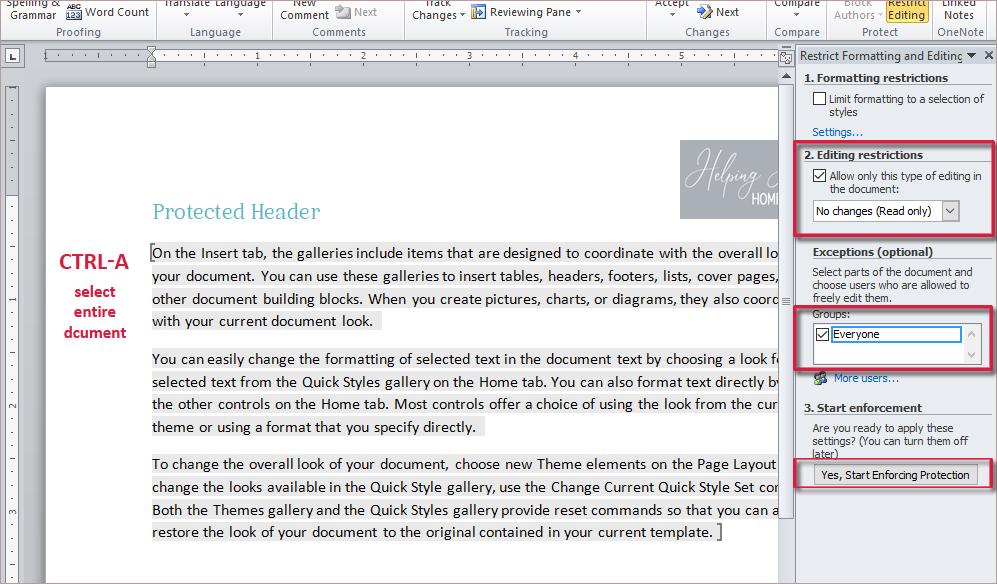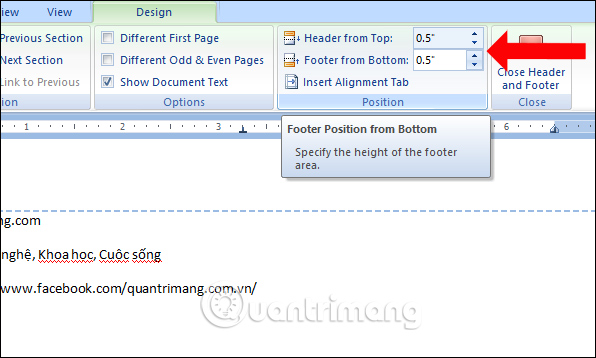

HOW TO LOCK HEADER AND FOOTER IN WORD FULL SIZE
Next, format Text Box to dynamically accommodate the full size of the table. To achieve this, click the Text Box, then click Layout > Position and choose the option Position in Bottom Center with Square Text Wrapping (steps 1-5). In this case, it is a good idea to position Text Box directly above the bottom margin and set the formatting so that its height will change according to the size of the dynamically rendered table. If a table within the Text Box contains a repeating element, such as a Group or List tagging element, its size varies depending on the number of table rows rendered during report generation. We often have to deal with dynamically sized template elements. For testing purposes, we have inserted only a simple table with totals and the Field tagging element bound to the InvoiceAmount data field.

Unfortunately, there is no option to set a header/footer for the last page, which would be exactly what we need in this scenario. Each section can have different headers and footers for the first page, even pages and all other pages.

MS Word allows us to format three sets of headers and footers per section. can we format a last page footer? Unfortunately, there is no such built-in MS Word functionality as of now. With such a requirement, your first thought might be if Word supports this natively – i.e. Let’s now see how we can accomplish this with Docentric. When designing SSRS reports there is no Report footer either, but you can achieve it using a workaround with Page footer and the Visibility expression using Global variables – Globals!PageNumber and Globals!TotalPages. If there are more pages, it appears only at the bottom of the last page. If this document is printed on one page only, the Totals are printed at the bottom of the first page.
invoice total amounts at the bottom of the last page. When you’re finished, close the Document Inspector dialog and save your changes.Suppose we want to create an invoice form – or another report template for this matter – with some details, e.g. Simply click on Remove All to delete all headers, footers and watermarks in your document. When the Document Inspector dialog box appears, uncheck all boxes except Headers, Footers, and Watermarks. From the Info pane, click on Check for Issues and then select Inspect Document from the pop-up menu. Open your Word document and go to the File tab of the Ribbon. Method 2: Remove Header or Footer in Word Using Document Inspector You can use the similar methods to remove the headers from your Word document. Now, all text or other stuff in the footers section should disappear. Just click on Footer and then choose Remove Footer from the drop-down menu. Under the Header & Footer tab of the Ribbon, you will see the Header item and Footer item in the sub-item list. Next, click on the Edit Footer button that appeared. Method 1: Remove Header or Footer in Word via Right-clickĪfter opening your Word document, right-click on the footer at the bottom of any page. How can I remove footers from a Word document prior to printing? This header takes up too much space and you need to delete it? In this tutorial we’ll show you easy ways to remove header and footer in Microsoft Office Word 2019 / 2016.


 0 kommentar(er)
0 kommentar(er)
